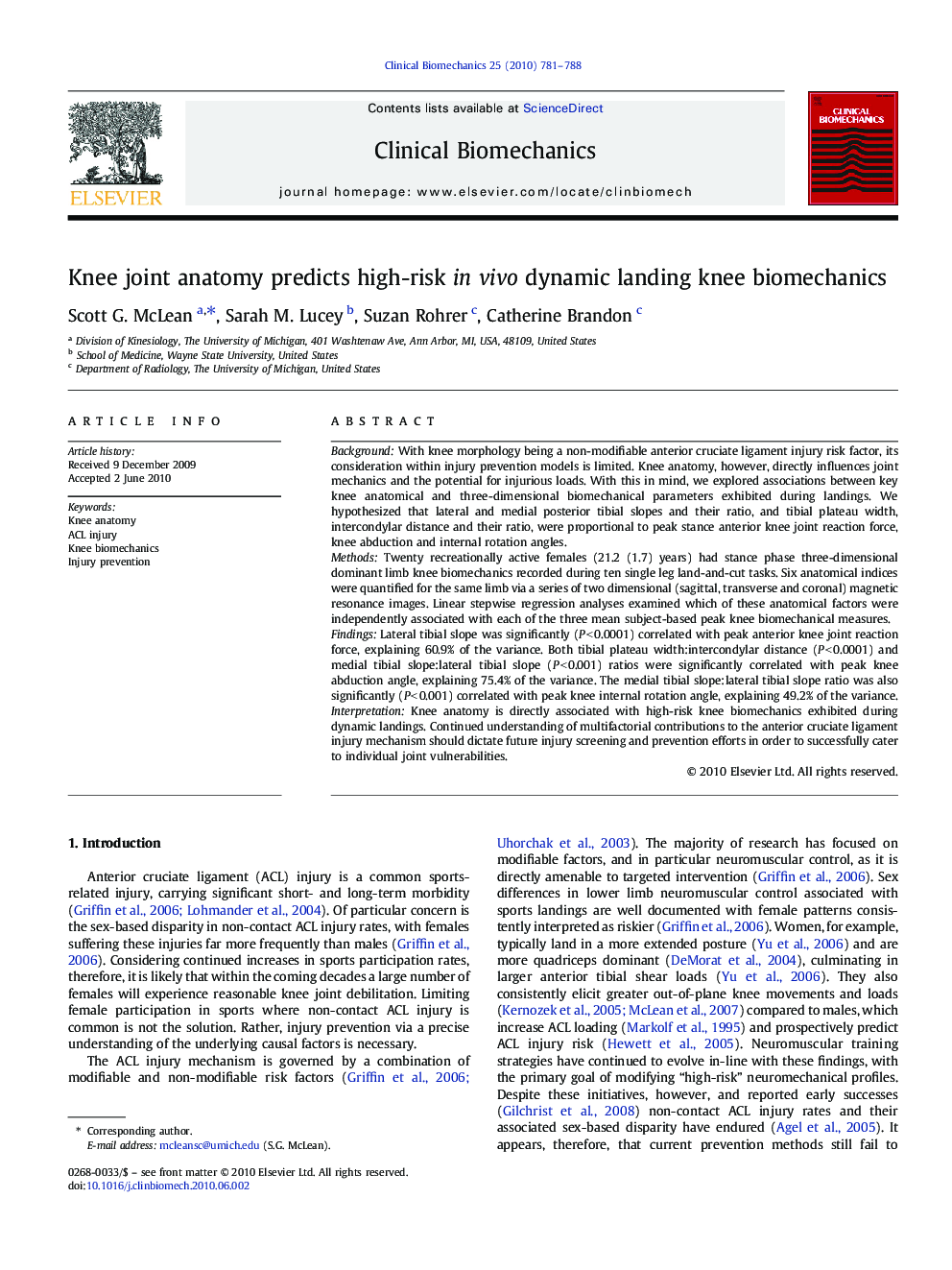| کد مقاله | کد نشریه | سال انتشار | مقاله انگلیسی | نسخه تمام متن |
|---|---|---|---|---|
| 4050597 | 1264946 | 2010 | 8 صفحه PDF | دانلود رایگان |

BackgroundWith knee morphology being a non-modifiable anterior cruciate ligament injury risk factor, its consideration within injury prevention models is limited. Knee anatomy, however, directly influences joint mechanics and the potential for injurious loads. With this in mind, we explored associations between key knee anatomical and three-dimensional biomechanical parameters exhibited during landings. We hypothesized that lateral and medial posterior tibial slopes and their ratio, and tibial plateau width, intercondylar distance and their ratio, were proportional to peak stance anterior knee joint reaction force, knee abduction and internal rotation angles.MethodsTwenty recreationally active females (21.2 (1.7) years) had stance phase three-dimensional dominant limb knee biomechanics recorded during ten single leg land-and-cut tasks. Six anatomical indices were quantified for the same limb via a series of two dimensional (sagittal, transverse and coronal) magnetic resonance images. Linear stepwise regression analyses examined which of these anatomical factors were independently associated with each of the three mean subject-based peak knee biomechanical measures.FindingsLateral tibial slope was significantly (P < 0.0001) correlated with peak anterior knee joint reaction force, explaining 60.9% of the variance. Both tibial plateau width:intercondylar distance (P < 0.0001) and medial tibial slope:lateral tibial slope (P < 0.001) ratios were significantly correlated with peak knee abduction angle, explaining 75.4% of the variance. The medial tibial slope:lateral tibial slope ratio was also significantly (P < 0.001) correlated with peak knee internal rotation angle, explaining 49.2% of the variance.InterpretationKnee anatomy is directly associated with high-risk knee biomechanics exhibited during dynamic landings. Continued understanding of multifactorial contributions to the anterior cruciate ligament injury mechanism should dictate future injury screening and prevention efforts in order to successfully cater to individual joint vulnerabilities.
Journal: Clinical Biomechanics - Volume 25, Issue 8, October 2010, Pages 781–788